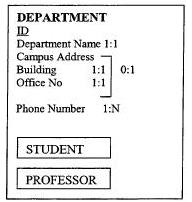DATA MODELING
In the process of data modeling, depiction and observation of the developers regarding the data is created and this data modeling is the main vital task in the growth of the effective database request. When the developers find that the view of data is signified improperly by the data model, then the developers find it very complicated to extend, incomplete and it is very provoking of applications.
For the improvement of the databases and their applications for all successive work the data modeling is the starting point.
For the data modeling we have two types of approaches. They are
- Entity relationship model
- Semantic object model
Entity relationship model
We have four fundamental elements in the entity relationship model.
- Attributes
- Identifiers
- Relationships
For these entities the attributes are behaving like assets. For an example the person is entity and the age of a person or name of the person is the attribute.
Individually for the particular entities we can identify these identifiers.
Between the two entities we are using the se relationships.
The Works in Relationship Set
For the entities we are using the attribute known as relationship. This relationship is in different types.
- One-to-One relationship
- One-to-Many relationship
- Many-to-One relationship
- Many-to-Many relationship
Semantic Object Model
In the place of entities we are using the semantic objects in the semantic object model. In the user environment with a quantity of the identifiable thing the semantic object is characterized. For a semantic object that the object must have sufficient attributes that is the reason the word ‘sufficiently’ is working as a major role.
For the E-R model and in the semantic object model there is one of the main difference is in the E-R model the entities are the basic focus where as in the semantic object model these semantic objects are focus in the other model.
A Semantic Model
To signify the different types of data we are having variety of classes. Some of the necessary objects are Simple Objects, Composite Objects, Compound Objects, and Hybrid Objects.


